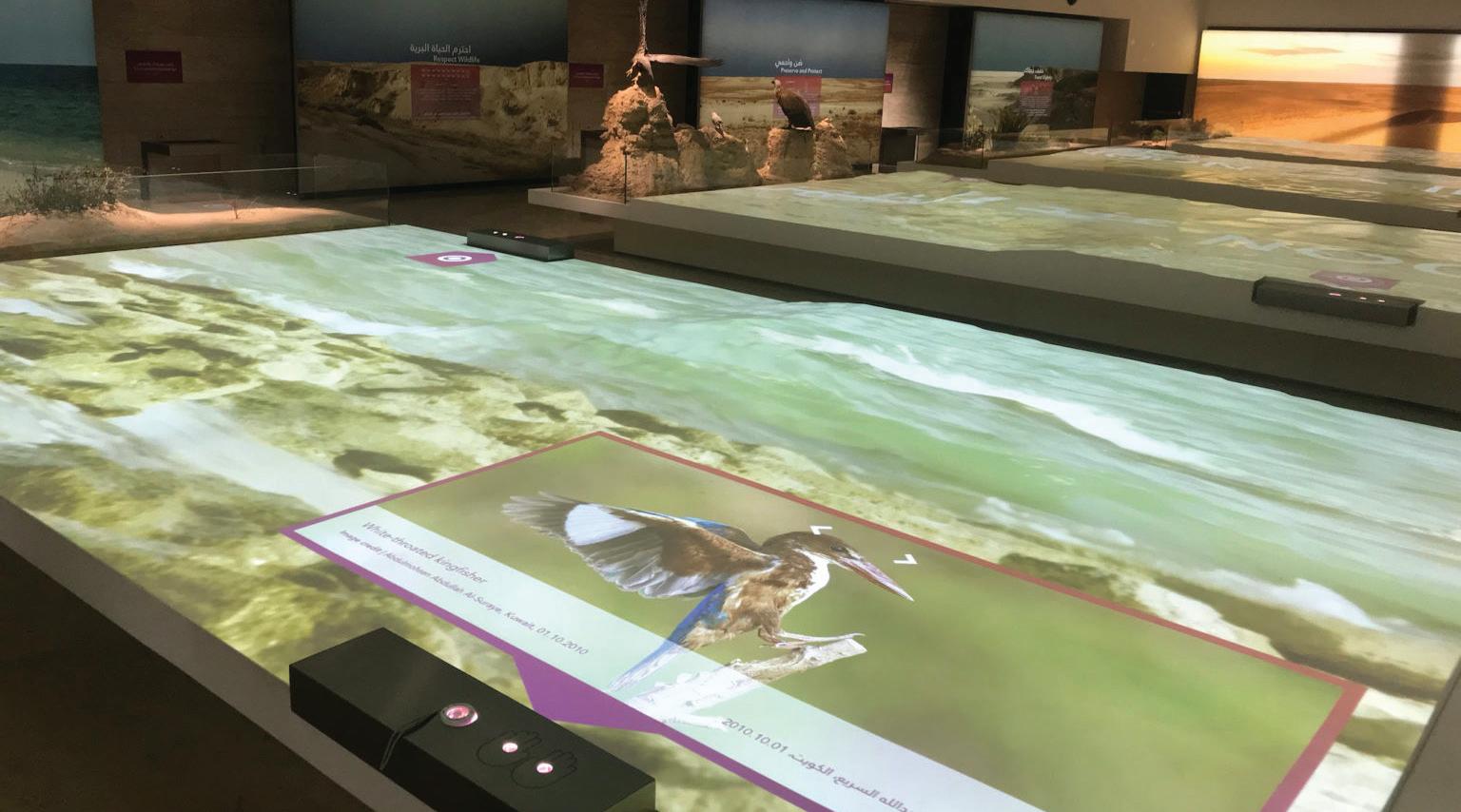
7 minute read
Attractions Management insights
Reaching for the stars
First Light Pavilion by Hassell at Jodrell Bank is set to bring space exploration to life
■■First Light Pavilion will help transform the visitor experience
We have embraced the challenge to push the boundaries of design to deliver a truly exceptional experience for visitors
Construction has begun on a Hassell-designed grasscovered dome pavilion at Jodrell Bank to help celebrate the site’s heritage and the beginnings of radio astronomy when it opens in the middle of 2021. Jodrell Bank is located in Cheshire, UK, and is home to one of the world’s largest and extremely powerful radio telescopes, the Lovell Telescope, which is used to explore deep space
The pavilion, built for the University of Manchester, will house exhibition space and a 150-seat auditorium, with visitors exiting via a café and a circular courtyard. Its design is partly inspired by sculptures, structures and natural landforms from around the world, including Newgrange in Ireland and Fuji Kindergarten in Tokyo, and is aimed at being energy efficient and sympathetic to its surroundings, blending into the landscape.
The circular shape of the pavilion and its 76m (25ft) diameter reference the shape and size of the Lovell Telescope dish and the design is aimed, in part, at helping to protect and enhance views across the Jodrell Bank site and the arboretum in which it is situated.
Julian Gitsham, principal at Hassell, said: "The completion of the First Light Pavilion will mark a new era for Jodrell

The building expresses humanity's long journey towards understanding our place in the universe
Bank. It will introduce new generations to the rich history of the site and the wonders of radio astronomy.
"The observatory team has been totally committed to developing the site in a way that is sensitive to its heritage, yet transformational in its future impact. "To have been part of this team is an exceptional opportunity for Hassell. We have embraced the challenge to push the boundaries of design to deliver what will undoubtedly be, a truly exceptional experience for all who visit this remarkable site."
Illuminating visitors Visitors will arrive in an entrance space illuminated by a single slot window in the building’s south axis, designed so the sun’s light will fall directly onto a ‘meridian line’ set into the floor at noon on midsummer’s day. They will then circulate clockwise through exhibits telling the story of Jodrell Bank’s role in the early space age and the history of radio astronomy.
The centrepiece of the space is a 150-seat auditorium “pod” which features a curved overhead screen for “dynamic and immersive” night sky projections and educational lectures. Professor Teresa Anderson, director of the Jodrell Bank Discovery Centre at the University of Manchester explained: “The architecture of the building itself is tied to the sky in a way that expresses humanity’s long journey towards trying to understand our place in the universe. "We're delighted construction work is about to begin on our visionary new First Light Pavilion.
"The construction of this wonderful new gallery will allow us to tell the story of Jodrell Bank in a way that is in keeping with our status as the UK’s newest UNESCO World Heritage site."
■■Julian Gitsham, principal at Hassell, explained: "The completion of the First Light Pavilion will mark a new era"

■■Sing Sing prison museum is set to fully open in 2025, the 200th anniversary of the original cell block

Crime and Punishment
Plans to revitalise Sing Sing prison's historic buildings are entering a new era

■■ Sing Sing's Brent Glass is gearing up for the new museum
Aproposed museum based on the site of New York's notorious Sing Sing Correctional Facility has received key funding grants from corporate and national institutions, bringing its non-state funding to more than US$1m (€920,000, £770,000).
The maximum-security prison opened in 1825 and holds around 1,700 inmates. The Sing Sing Prison Museum (SSPM) will be located in two buildings: the former prison powerhouse, which is located outside of the facility; and the historic original cell block, which is within the prison walls.
SSPM plans to tell the compelling story of 200 years of incarceration at the prison, and challenge visitors to reflect on the nature and development of the USA's criminal justice system.
The latest grants are for US$150,000 (€138,000, £115,000) from the Andrew W. Mellon Foundation, to help create a master narrative and interpretive framework in partnership with Columbia
■■The creation of the Sing Sing historic prison museum on the banks of the Hudson is set to happen






University's Center for Justice and Pace University's Center for Research and Community Action; and US$30,000 (€28,000, £23,000) from the National Endowment for the Humanities to conduct a survey of artefacts and manuscripts as well as photographs and public records, which will inform the development of the master narrative and framework. "We're delighted and honoured by these grants and are grateful these organisations recognise the importance of our mission, which is to inspire, inform
and reflect on the history of punishment and rehabilitation in the American penal system through the perspective of Sing Sing Prison," said Brent Glass, interim executive director of SSPM.
Opening soon The site is projected to attract 130,000 visitors per year, the first phase of the museum is scheduled to open in late 2020 with the full opening expected in 2025, which will be the 200th anniversary of the original cell block.
Through our open access initiative the Smithsonian is empowering people across the globe

Lonnie Bunch
Accessing the past
The world renowned Smithsonian makes 2.8 million of its images freely available online in a digital milestone
■■The Smithsonian's 19 museums and vast archives and other facilities, have all contributed to the open access project

Smithsonian Open Access, an initiative to provide free access to millions of digital collection images and data, has been launched, with anyone now able to download, transform and share content for free and for any purpose without copyright restrictions.
Beginning with 2.8 million images, the institution said that this is the largest and most interdisciplinary open-access programme by a museum or cultural institution to date. It aims to have more than three million images designated as open access by late 2020.
With contributions from all of the Smithsonian’s 19 museums, nine research centres, libraries, archives and the National Zoo, the programme includes content across the arts, sciences, history, culture, technology and design, from portraits of historic American figures
■■Cultural artefacts are now available to access online

to 3D scans of dinosaur skeletons. High-resolution 2D and 3D images, research datasets and collections metadata can all be downloaded in bulk. While the Smithsonian has previously made more than 4.7 million collection images available online for personal, non-commercial and educational use, the new open-access project gives nearly three million of those images a Creative Commons Zero designation, which waives the institution’s copyright and permits a greater variety of uses, both commercial and non-commercial.
Open access is 'milestone' "Open access is a milestone for the Smithsonian in our efforts to reach, educate and inspire audiences," said Smithsonian secretary Lonnie Bunch, before going on to explain: "Through this initiative, we are
empowering people across the globe to reimagine and repurpose our vast number of collections in creative and imaginative new ways."
The open access project makes this Smithsonian content available via Creative Commons, Google Arts & Culture, Wikipedia and other digital platforms. Among those who have worked with the Smithsonian in using its open access collections to create original works and discover new insights are Google Arts & Culture, which applied machine learning to the Smithsonian collections to uncover connections between early women scientists at the Smithsonian and their life’s work. Artist Amy Karle is another who benefitted from the free digital content after using a 3D scan of a Triceratops from the National Museum of Natural History to create nine sculptures.

■■Cutting-edge artist Amy Karle has benefitted from the Smithsonian's free digital content





